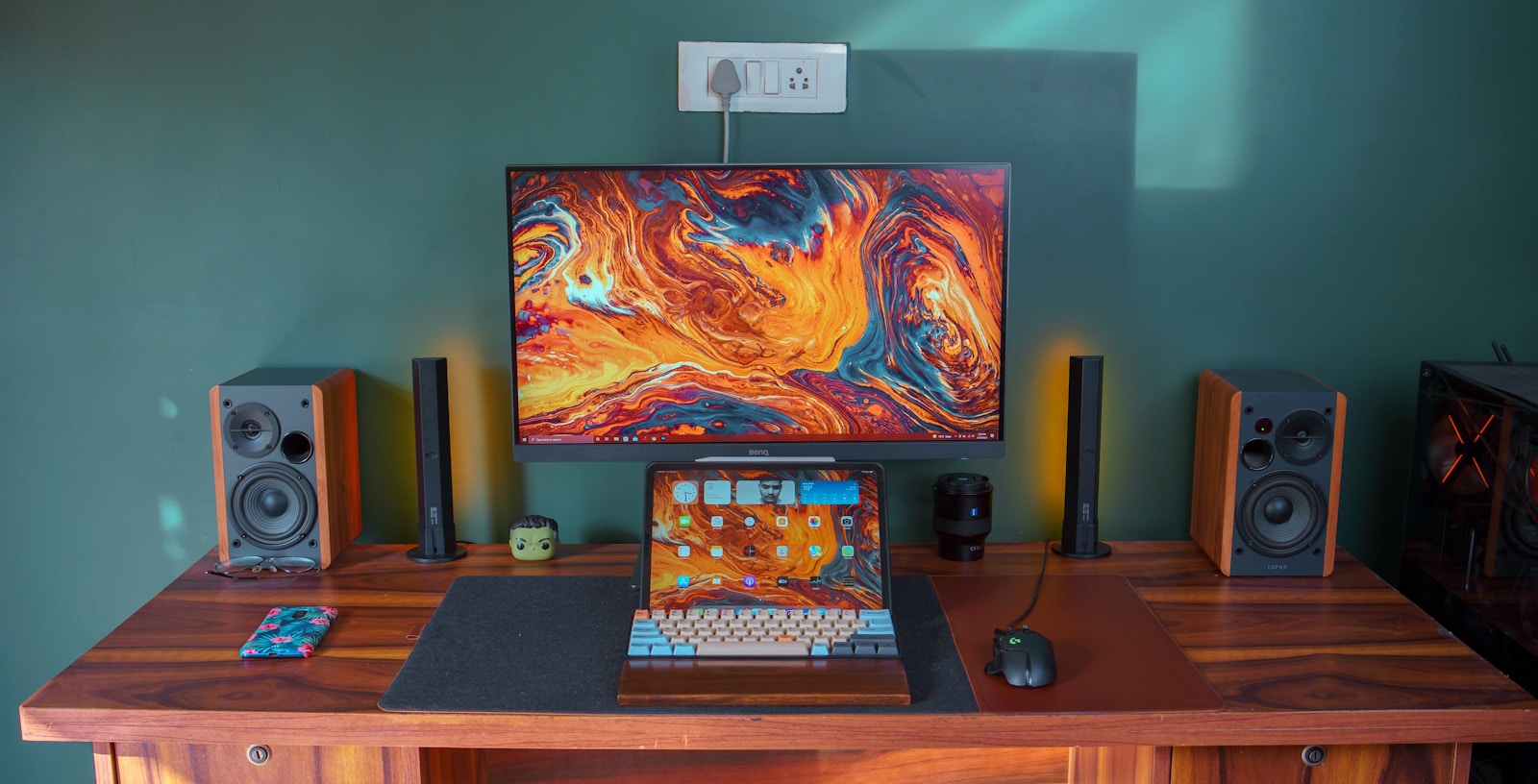Creating premium gaming experiences on tight budgets requires strategic component selection, smart shopping timing, and focusing investment on elements that provide maximum impact on gameplay quality and aesthetic appeal. Hardware analysis shows that well-planned budget builds costing $600-800 can deliver 85% of the performance of $2000+ premium systems, while strategic accessory choices and setup optimization create premium aesthetics for 60% less than high-end configurations.
1. Strategic Component Prioritization and Value Optimization
1.1 Performance-per-Dollar Component Selection
Focus budget allocation on components that provide maximum gaming impact—graphics card first, then CPU, with memory and storage as secondary priorities. A $300 graphics card paired with a $150 CPU often outperforms the reverse allocation for gaming performance.
1.2 Previous Generation Hardware and Value Timing
Purchase previous generation components when new releases create price drops on older but still capable hardware. Last generation’s flagship often matches current mid-range performance at significant savings while providing years of gaming capability.
1.3 Platform Selection and Upgrade Path Planning
Choose platforms with clear upgrade paths that allow component improvements over time rather than complete system replacement. AM4 and LGA 1200 platforms provide multiple CPU upgrade options that extend system life and value.
1.4 Used Market Navigation and Risk Management
Research used hardware markets for graphics cards, CPUs, and monitors that provide premium performance at budget prices. Focus on components with good resale value and avoid items prone to wear or obsolescence.
2. Display Technology and Visual Impact Maximization
2.1 Monitor Selection and Size-Resolution Balance
Choose 1080p displays over higher resolutions to maximize performance from budget graphics cards while selecting larger screen sizes that provide immersive experiences. 27-inch 1080p often provides better gaming value than 24-inch 1440p for budget systems.
2.2 Panel Technology and Response Time Priorities
Prioritize fast response times and low input lag over premium panel technologies like IPS or OLED that increase costs significantly. Modern TN and VA panels provide excellent gaming performance at budget-friendly prices.
2.3 HDR and Color Accuracy Considerations
Understand that budget HDR often provides minimal benefit over standard displays, making color accuracy and brightness more important than HDR certification for overall visual quality in budget-conscious builds.
2.4 Multi-Monitor Setup Planning
Consider dual 24-inch monitors instead of single large displays to provide multitasking benefits and immersive gaming at competitive total costs. Two screens offer productivity advantages while maintaining gaming focus.
3. Audio Solutions and Immersion Enhancement
3.1 Headphone vs Speaker System Economics
Quality headphones typically provide better audio experiences per dollar than speaker systems while avoiding acoustic treatment costs and neighbor considerations. $100 headphones often exceed $300 speaker system performance for gaming.
3.2 Audio Interface and Amplification Needs
Determine whether budget headphones require amplification or if onboard audio provides sufficient quality. Many budget gaming headphones work excellently with motherboard audio, avoiding additional DAC/amp expenses.
3.3 Microphone Solutions for Communication
Choose dedicated USB microphones over gaming headset mics for superior voice quality in team gaming and streaming. Budget USB mics often provide broadcast-quality audio for content creation and communication.
3.4 Surround Sound and Spatial Audio
Utilize software-based surround sound solutions and spatial audio that provide immersive experiences without expensive hardware. Many modern games and Windows features create excellent positional audio through standard stereo equipment.
4. Input Devices and Gaming Performance Enhancement
4.1 Keyboard Selection and Switch Technology
Choose mechanical keyboards with budget-friendly switch options that provide tactile feedback and durability without premium switch costs. Outemu and Gateron switches offer excellent performance at significant savings over Cherry MX.
4.2 Mouse Performance and Ergonomic Considerations
Prioritize sensor accuracy and ergonomic fit over premium features like wireless connectivity or RGB lighting. Wired mice with quality sensors often provide better performance-per-dollar than wireless alternatives.
4.3 Controller Options and Compatibility
Consider Xbox controllers for PC gaming that provide excellent compatibility and build quality at reasonable prices. Third-party alternatives often provide 80% of the experience at 50% of the cost for budget-conscious gamers.
4.4 Specialized Gaming Peripherals
Evaluate whether gaming-specific peripherals like racing wheels or flight sticks justify costs based on game library and usage frequency. Standard controllers often provide adequate experiences for casual genre gaming.
5. Aesthetic Enhancement and Premium Appearance
5.1 Case Selection and Visual Impact
Choose cases with tempered glass panels and clean designs that create premium appearances without paying for unnecessary features. Budget cases can look expensive through good design rather than premium materials.
5.2 RGB Lighting and Customization
Use affordable RGB strips and fans to create custom lighting effects that transform budget builds into visually impressive systems. Coordinated lighting themes create premium aesthetics regardless of component costs.
5.3 Cable Management and Clean Presentation
Invest time in proper cable management and organization that makes budget components look professional and well-planned. Clean cable routing and management significantly improve perceived build quality and aesthetics.
5.4 Component Coordination and Theme Development
Select components with coordinating colors or design themes that create cohesive aesthetics rather than mixing random parts. Visual coordination makes budget builds appear more expensive and intentionally designed.
6. Performance Optimization and System Tuning
6.1 Overclocking and Performance Enhancement
Learn safe overclocking techniques that extract additional performance from budget components without additional hardware costs. Memory overclocking and GPU tuning can provide 10-15% performance improvements for free.
6.2 Software Optimization and Driver Management
Maintain updated drivers and optimize system settings for gaming performance over general computing. Proper software configuration can improve performance significantly without hardware changes.
6.3 Cooling Solutions and Temperature Management
Use affordable air cooling solutions that maintain safe temperatures while allowing performance optimization. Budget tower coolers often provide excellent cooling performance without expensive liquid cooling systems.
6.4 Storage Configuration and Load Time Optimization
Prioritize SSD storage for operating system and frequently played games while using mechanical drives for mass storage. This hybrid approach provides fast load times where they matter most while maintaining storage capacity.
7. Future-Proofing and Upgrade Strategy Planning
7.1 Component Upgrade Path and Compatibility
Plan upgrade sequences that maximize existing component value while providing clear performance improvement paths. Understanding socket compatibility and generation limits enables smart upgrade timing and planning.
7.2 Power Supply Headroom and Expansion Capability
Choose power supplies with capacity for future graphics card and component upgrades rather than minimum requirements. Quality PSUs with 20-30% headroom support system evolution without complete rebuilds.
7.3 Memory and Storage Expansion Planning
Select motherboards with multiple RAM slots and M.2 connectors that support memory and storage expansion as needs grow. Planning expansion capability enables gradual system improvement over time.
7.4 Market Timing and Component Lifecycle
Understand component release cycles and plan purchases during promotional periods or generation transitions that maximize value. Strategic timing can provide 20-30% savings on identical components.
Conclusion
Premium gaming experiences on budget require strategic component selection, aesthetic attention, and performance optimization rather than expensive hardware. The key lies in understanding which components most impact gaming experience and visual appeal while avoiding unnecessary premium features that provide minimal benefit. Focus investment on graphics performance, display quality, and system aesthetics that create lasting satisfaction. Smart shopping, used market navigation, and patient component selection enable premium gaming experiences at fraction of high-end system costs while providing clear upgrade paths for future enhancement.











